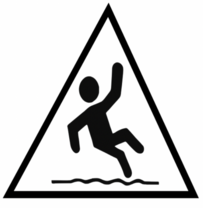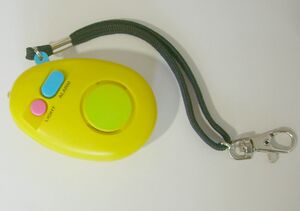Long Lie
Introduction[edit | edit source]
A significant aspect of having a fall is the "long lie", a term coined for when a person has fallen and spends a prolonged period of time on the floor because they are unable to get up. This being a contributor to the fact that significant mortality and morbidity are associated with falls in general. Literature defines a long lie as being on the floor for an hour or more[1][2]. Long lie is a marker of frailty, illness and social isolation[3].
Epidemiology[edit | edit source]
Getting up from the ground after a fall is a challenge for the older adult, with or without sustaining an injury in the fall.
- Tinetti et al[4] reported 47% of non-injured fallers were unable to get up without assistance. Those who have fallen often end up in emergency departments for assessment and 20% of these fallers have been on the ground for more than an hour[5].
- In a study[2] of 322 MS sufferers over the age of 55, 27.6% experienced a delayed initial recovery of >10minutes on the ground after falling. Fifteen people (4.7%) reported a long lie of more than one hour on the ground.
- In a one year study[1] of 110 "oldest old" adults (>90 years), 59% were found on the floor at some stage. Eighty percent of those who fell were unable to get up. Eighty eight percent of those who fell were alone. Thirty percent of fallers i.e. 20 people lay on the ground for more than one hour.
- A study of 125 adults >65 years[6] found that half of those who lay on the floor for more than one hour went on to die within the following six months, even without a direct injury from the fall.
Causes[edit | edit source]
The main cause of a long lie is being unable to get up from the ground independently. This could be due to a multitude of factors, including:
- Injury from fall e.g. hip fracture, assessment and management of concussion, loss of consciousness
- Location of fall e.g. narrow hallway, outdoors in a garden on a slope
- Muscle weakness
- Lack of social supports i.e. no one around to notice that the individual has fallen and needs help to get up
Implications[edit | edit source]
- Delayed medical treatment
- Dehydration
- Rhabdomyolysis i.e. muscle and tissue damage
- Pressure injuries
- Carpet burns
- Hypothermia
- Pneumonia
- Fear of falling
Risk Factors[edit | edit source]
- Difficulty in getting up is associated with age, decreased mobility and severe cognitive impairment[1].
- Women over the age of 90 are six times more likely to have difficulty getting up from the floor by themselves[1].
- Residents in supported living facilities have a 16 fold increased odds of being unable to get up without help[1].
Prevention[edit | edit source]
The best way to prevent a long lie is to prevent falls in the older adult. See both the Falls page and category in Physiopedia for further detail.
Falls prevention strategies include:
- Medical
- Medical check up to exclude or treat acute illness
- Optimise medications
- Assess vision
- Musculoskeletal
- Strength and balance exercise
- Mobility
- Teaching older adults safe ways to get up from the floor after a fall e.g. backward-chaining.
- Assess or reassess walking aids
- Gait retraining
- Environmental modifications
- Assess footwear
- Activity modification
- Changing the way the older adult carries out their ADLs
- Supervision by another person where possible
- Technology
- Wearing a personal alarm or carrying a mobile phone. Older adult's perceptions of these devices and their usefulness can be challenging, requiring some education and encouragement[1].
References[edit | edit source]
- ↑ 1.0 1.1 1.2 1.3 1.4 1.5 Fleming J. Inability to get up after falling, subsequent time on floor, and summoning help: prospective cohort study in people over 90. BMJ 2008;337:a2227. Accessed 29 May 2019.
- ↑ 2.0 2.1 Bisson EJ, Peterson EW, Finlayson M. Delayed initial recovery and long lie after a fall among middle-aged and older people with multiple sclerosis. Arch Phys Med Rehabil. 2015; 96(8):1499-505. Accessed 29 May 2019.
- ↑ Lord SR, Sherrington C, Menz HB. Falls in Older People: Risk Factors and Strategies for Prevention. Cambridge University Press. 2001. Accessed 29 May 2019.
- ↑ Tinetti ME, Liu W, Claus EB. Predictors and Prognosis of Inability to Get Up After Falls Among Elderly Persons. JAMA. 1993;269(1):65-70.
- ↑ Vellas B, Cayla F, Bocquet H, de Pemille F, Albarede JL. Prospective study of restriction of activity in old people after falls. Age Ageing. 1987 May;16(3):189-93.
- ↑ Wild D, Nayak US, Isaacs B. How dangerous are falls in old people at home? Br Med J (Clin Res Ed) 1981;282:266.








